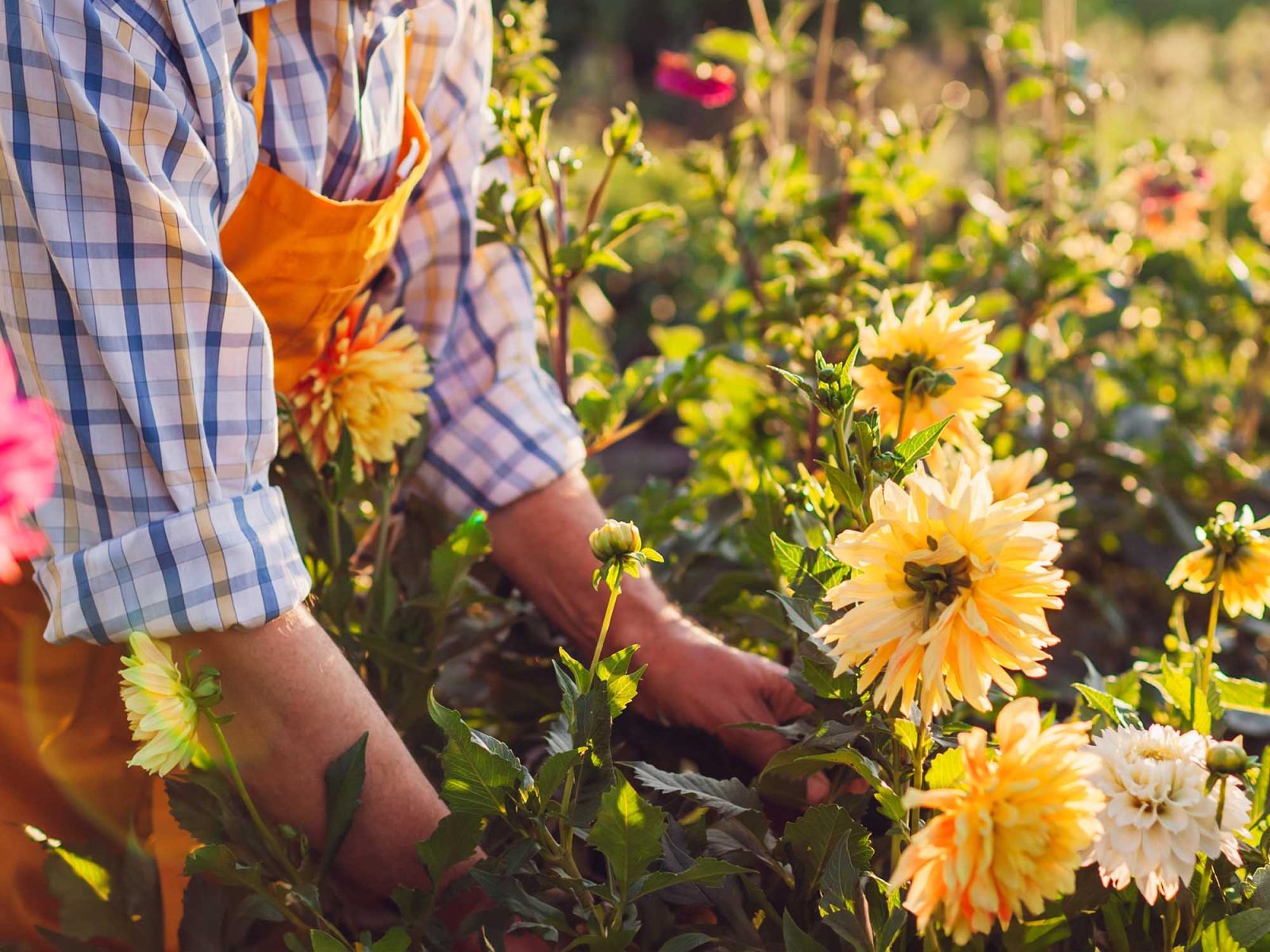
The beautifully landscaped grounds at each Wesley campus are a captivating attraction for many residents. Among them are John Shaffer of Wesley Lea Hill and Cory Olson, who calls Wesley at Tehaleh home. Both oversee their community’s vibrant, thriving raised garden beds. Each bed reflects the unique personality of its caretaker, boasting various crops like peas, strawberries, tomatoes, and beans. And notably, the favorite of John and Cory: dahlias.
An Interest Blossoms
John’s passion for gardening took root on his family’s Illinois farm during his youth. However, it wasn’t until he relocated to Washington after marriage that he discovered his love for cultivating dahlias. Over the years, he transformed backyards and even commercial farms with the beauty of these exquisite flowers. At the retirement community where John served as the chaplain, he became affectionally known as the ‘dahlia man.

“I would bring in freshly cut blooms from my garden, and the staff would help me arrange them into bouquets for the residents. It brought everyone a lot of joy,” said John.
Cory’s green thumb emerged when he became a backyard gardener. He tended to the berry bushes and apple trees at his first home. It was there that he first encountered a spiky, flame-colored flower – a dahlia. It instantly captivated him! Since then, Cory’s fascination with dahlias has only deepened.
“I love the variety of colors. They come in every shade and blend of color you can think of, except blue. The variety is unending,” said Cory.
Gardening in Raised Beds
Residents at Wesley really enjoy the raised garden beds. In raised beds, preparing the soil for planting requires less effort compared to traditional ground-level gardens, eliminating the need for tilling, soil testing, and fence maintenance.
Cory explained, “Having a garden in the ground is more work. In the raised beds, I don’t need a tiller or stoop to plant them or dig up the tubers. Dahlias require a lot of water though. I designed the raised beds to have a watering faucet at the end of each section with a soaker hose. It’s so much easier and faster.”
John and Cory, both seasoned gardeners, recommend planting the dahlia tuber, the plant’s nourishing root, in mid-April, before Mother’s Day. By then, the soil has warmed to approximately 50 degrees. That creates an ideal environment for the blooms to flourish.
Dahlias: Cultivation and Care Tips
John and Cory provided a step-by-step guide to ensure a successful dahlia display:
Planting
- Dig a Hole: The depth should allow the tuber to be planted just below the soil’s surface.
- Position the Tuber: Place the dahlia tuber in the hole with any “eyes” or buds facing upward.
- Backfill and Stake: Gently backfill the soil around the tuber and secure it with a stake. Water thoroughly.
Storage for Year-Round Blooms
- Post-Frost Harvest: After the first hard frost, typically in November, cut back the top growth. Carefully dig up the dahlia tubers.
- Divide and Store: Divide the tubers and place them in paper sacks, adding newspaper on top. Alternatively, consider using sawdust, peat moss, or cardboard boxes. The key is to allow the roots access to air flow. Avoid plastic bags.
- Optimal Storage Temperature: Store the tubers in a consistently dry, cool climate, ideally around 45-50 degrees Fahrenheit. Too much heat can lead to dehydration or rot, and extreme cold may cause freezing.
- Winter Monitoring: Regularly check the tubers during winter. If one tuber rots, it could affect the entire batch.

The Tehaleh Garden Committee harvests 125-150 dahlia blossoms each week from August to September. These blooms find their way into vases and jars, where Wesley residents create bouquets to enjoy in their apartments. In October, the Garden Committee invites the entire Tehaleh community to join in harvesting dahlias from the garden.
John noted, “Many think it hurts the plant to cut the blooms, but it encourages new growth. Picking and sharing blooms is a gift to the plant.”
At Wesley campuses, the passion for connection and community thrives. Resident groups organically form in the communities, providing a nurturing space for shared experiences. And the raised garden beds are a great area for residents to showcase their love for the beauty and bounty from the earth.